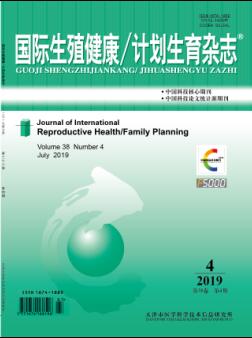|
|
Effects of Dehydroepiandrosterone on the Clinical Outcomes of In Vitro Fertilization/Intracytoplasmic Sperm Injection-Embryo Transfer for the Patients with Poor Ovarian Response
GAO Rui-fan, TU Zeng-rong, WANG Li-yuan, DUAN Rui-yun
2019, 38 (5):
370-373.
Objective:To investigate the effects of dehydroepiandrosterone(DHEA) on the clinical outcomes of in vitro fertilization/intracytoplasmic sperm injection-embryo transfer (IVF/ICSI -ET)in the patients with poor ovarian responsiveness (POR). Methods: A total of 205 patients with POR who underwent in vitro fertilization and embryo transfer in our Center were enrolled in this study. The patients were randomly divided into three groups;Group A consisted of 69 patients who received DHEA 25 mg orally three times a day for one month, Group B consisted of 64 patients who received DHEA 25 mg orally three times a day for three months,and Group C consisted of 72 patients who did not receive DHEA pretreatment. The levels of follicle stimulating hormone (FSH), stradiol (E2), anti-Mullerian hormone (AMH) and antrol follicle count (AFC) were measured on the third day of menstruation after pretreatment. Routine short-term protocol (GnRHa+Gn) was used for the controlled ovarian hyperstimulation (COH). The number of eggs retrieved, fertilization rate, high quality embryo rate, embryo implantation rate, clinical pregnancy rate, early spontaneous abortion rate, cycle cancellation rate were compared among the three groups. Results: In the group A, there were no significant differences in the levels of FSH, E2, AMH and AFC when compared before and after DHEA pretreatment. In the group B, the levels of FSH and E2 were significantly decreased, while the levels of AMH and AFC increased, after DHEA pretreatment (all P<0.05). There was no significant difference in the Gn amount among the three groups. There were no significant differences in the number of eggs retrieved, cleavage rate, fertilization rate, high-quality embryo rate, embryo implantation rate, clinical pregnancy rate, early spontaneous abortion rate and cycle cancellation rate when compared between the group A and the group C (all P>0.05). Interestingly, the number of eggs retrieved, high quality embryo rate, embryo implantation rate in the group B after DHEA treatment were significantly increased than those in the group C (P<0.05). Conclusions: DHEA can improve the ovarian reserve function and the clinical outcome of IVF-ET for the patients with POR, and the therapeutic effects are dependent on the duration of DHEA pretreatment.
Related Articles |
Metrics
|

